
|
|
 |

|


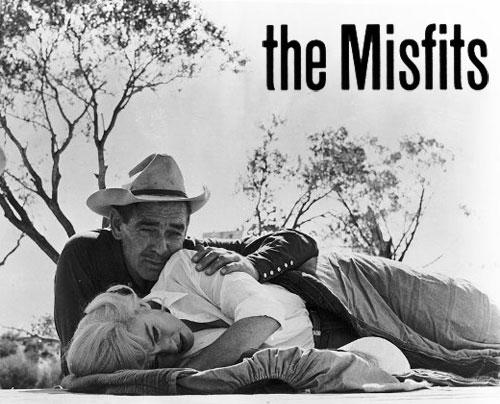
M.R. Dinkins Marilyn Monroe, Clark Gable and Montgomery Clift. "Combine these outstanding talents in a shattering story of people caught in a flood of emotional crosscurrents and the results is The Misfits." So says the movie trailer of the 1961 quasi-western directed by the master John Huston. What it couldn't say was that the three stars were caught in their own shattering stories and their own emotional crosscurrents. And that each one of the misfits attempted escape through suicide. In the movie, Marilyn played freshly divorced Roslyn Tabor as a woman psychologically lacerated and intensely fragile, like an open wound threatened by a sousing of salt. Or maybe she played herself, with the prescience of her portending divorce and death. She was grappling with her own precarious demons as well the predatory swain that such an exotic erotic body emboldens. Be it in her life or in her films. Be it by her inherent sexuality or by her own provocation. Meanwhile, Clark Gable (as Gay Langland), 59 years old, a hoary horseman, really had scant appeal - with an okay over-the-hill look, but the wrong dude for the part. Seeing the sexy Marilyn smitten by this sexist senior cowpoke was truly a misfit of unacceptable proportions - unless he was cast deliberately as her father fetish. Whereas Montgomery Clift (as Perce Howland) deftly coalesced his charismatic soft side with the bravado and bravery expected of a ranch roustabout and rodeo rider. Monty subtly traversed the range of his conflicted character, from Clark's mate and buddy, to Monroe's soul mate and bosom buddy. All three misfits were facing drastic readjustments to life's lot: Roslyn from a despondent divorce, Gay from escalating age and Perce from equivocating values. Tragically, the actors faced mutations of the same three in their daily lives on the shoot. 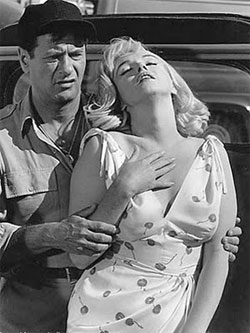
Stirring the plot is the adept Eli Wallach as Guido: a punctuation enhancing everybody's performance, an exclamation embellishing everybody's dialogue, and an italics canting each character's conflict. He was the overzealous suitor, the most beneficent chum, and, in the end, the nefarious foil who forced his pals to introspection. (God forbid that Miller's Roslyn play the provocateur that prods the machismic epiphany.) But it is Marilyn - as such a breath-taking beauty, in such a pure performance, and with so much magnetism - who ignites this despairing solitary stud flick cinegraphed in Nevada's mustang-country. Monroe was not the dumb naïve nymphet that she thought her husband, playwright and Misfits auteur Arthur Miller, had depicted. Miller saw his screenplay differently: "I had written it to make Marilyn feel good. I had seen the film as a gift for her, and I came out of it without her." Miller's munificent homage, (with doses of the condescension, paternalism and chauvinism so rampant in the fifties), bestowed a tender tribute that he hoped she would savor, and thus save their marriage. As an intellectual famous for his uncompromising principles, The Misfits honored Marilyn for her comparable uncompromising convictions and for the depth of her inner beauty. But it is easy to see where, in the writing and in the direction, she recognized many of the bewildering stereotypical flaws that men perceive in women. Marilyn-cum-Roslyn was someone positive about the possibilities, hopeful about promise, yet hesitant from past experiences, and unhappy from dreams unfulfilled. But her hope was misread as naiveté, her melancholy mistaken for moodiness, her openness misjudged for immaturity, her sincerity misunderstood as stupor, her generous spirit misconstrued as stupidity, her unquenchable kindness miscalculated as weakness, her passionate repulsion for cruelty misconceived as frailty, her trust misguided as gullibility, her artlessness misapplied as artifice. What a misfitful mess. At Huston's behest, Miller was a script collaborator, always on set, frequently changing the dialogue. Marilyn cracked under the pressure of relearning her lines; even Gable was known to complain. And as time went on, her accruing stress meshed desperation with medication. 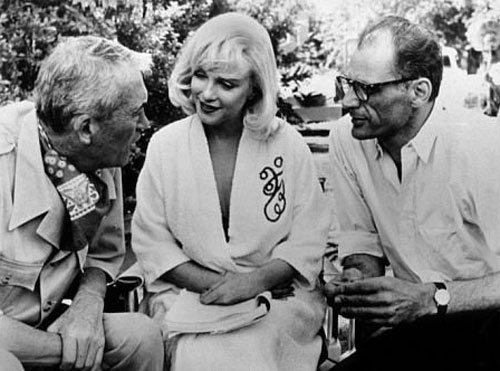 John Huston, Marilyn Monroe, Arthur Miller How would you like to work, cast in a part written by your husband who (you felt) demeans you (Miller), directed by a man who (you felt) bullies you (Huston), co-starring with an actor who (you felt) was semi-misogynistic (Gable), while preoccupied with the welfare of "the only person I know who is in worse shape than I am," (Clift)? Tough, huh. 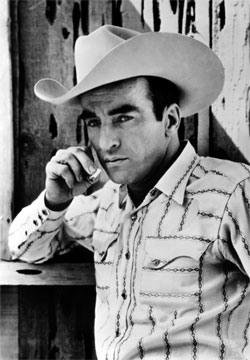
Monroe accused Huston of a sadistic on-set treatment of Clift, who Huston reputedly adored as a son but abhorred for his homosexuality. Certainly sadism bled onto the screen, seen climaxing with the brutal round-up of wild horses, (pre-ASPCA guardianship for the humane treatment of animals), pitting Miller's writing, Huston's direction and Gable's acting against the resistant Clift and the appalled Monroe. In a scene that pierces our psyche, Marilyn/Roslyn, forsaken by all, wrapped in blazing sun and sand, shrieks her profound repugnance for the fate of the beasts and for the men who snared them. Is she acting? Is it real? But why wrangle? It's so nakedly stark and so abrasively raw. Everyone has to concede her comic genius, but here she bares the amazing magnitude of her serious side. If you haven't seen it, you should. Bonus Features
The only Extra is the trailer. The clips encapsulate the beauty of Russell Metty's black and white cinematography of the reclusive Great Basin desert. And the stills show off some stunning portraits by a phalanx of the worlds best photographers, including Henri Cartier-Bresson, Cornell Capa, Bruce Davidson, Elliott Erwitt, Ernst Haas, Erich Hartmann, Eve Arnold and Inge Morath, who were on set documenting the making of the movie. Take the few minutes to watch it. Since there is nothing more than the trailer, I shall add my own Extras. The movie has a macabre appeal. It was to be Clark and Marilyn's last. And Monty's suicide came three films later. 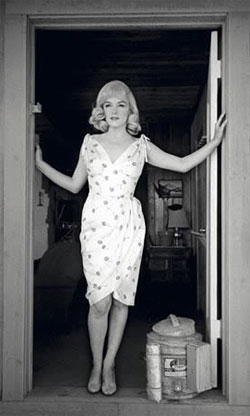
Although ever the enchanter, Monroe never seemed a romantic rival among her peers. She was a rare soul that generated intense maternal protection and affection - from most women and many men. You can see it in the movie: both Thelma Ritter and Clift offered her safety, solace and a soft shoulder. But on set, Monroe's lines-coach, Paula Strasberg, (wife of the famous acting guru, Lee) personified her guardian - much to the chagrin of Huston, Gable and Miller. Strasberg waged a tug-of-war-of-wills between her protégé and the men who desperately needed her performance. From hindsight, with all the accusations and explanations collected, interesting observations have been recorded. Many viewers thought that for the first time Gable stepped beyond his rogue charm to troll his serious side. Nine days after the wrap and three days before his death of a heart attack, as he watched an early rough cut of The Misfits, he said, "This is the best thing I did in my life." As for blame over Gable's immediate demise, some say it was Marilyn's on-set behavior, while others note his three packs of smokes a day, his heavy drinking, his previous heart condition, his speedy loss of 35 pounds for the role, and his reckless stunts - like being dragged over sweltering sand on a scorching day, wearing heavy padded clothing. Huston, meanwhile, defended the Industry with, "Marilyn wasn't killed by Hollywood. The girl was an addict of sleeping tablets and she was made so by the goddamn doctors." Despite the dramatic struggles and delays, it was Monroe who wanted Huston to direct her. She wanted a savvy director who would take her seriously. But was she happy about it in the end? When questioned in 1998, Miller answered, "I couldn't tell you, and I was not with her at the screening. By then, we were hardly able to speak to each other. I don't know what she made of it. I never found out." Meanwhile, behind the scenes, as Miller's marriage to Marilyn deteriorated under the omnipresent tension intensified by the desert heat, shooting delays and Monroe's obsession for Paula and her pills, he discovered his third wife among the Magnum coterie of photographers installed on set - Austrian Inge Morath. The only happily-ever-after-ending to this life-altering bronco-busting "Eastern Western" drama is that Miller and Morath remained married until her death, forty years later. 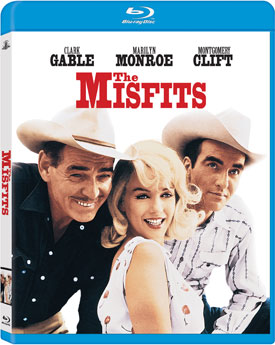
Studio: MGM Director: John Huston Cast: Marilyn Monroe, Clark Gable, Montgomery Clift, Eli Wallach, Thelma Ritter Length: 124 minutes Rated: Not Rated Video: Audio: Subtitles: 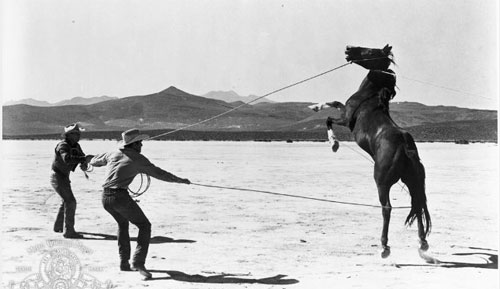
(Editor's Note: For more on the behind-the-camera making of this film, check out The Misfits book, [by Serge Toubiana], which features the great and often haunting images by the Magnum photographers as well as an interview with Arthur Miller.) |
Bookmark:
![]() del.icio.us
del.icio.us
![]() Reddit
Reddit
![]() Google
Google
| Send this Page | Print this Page | Report Errors |

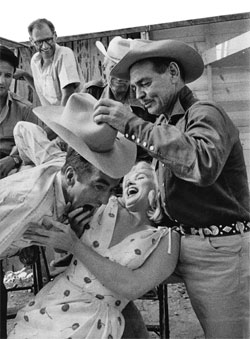 However, Clift, as a fan of his complicated co-star, said that "Marilyn was an incredible person to act with, the most marvelous I ever worked with and I have been working for 29 years."
However, Clift, as a fan of his complicated co-star, said that "Marilyn was an incredible person to act with, the most marvelous I ever worked with and I have been working for 29 years."